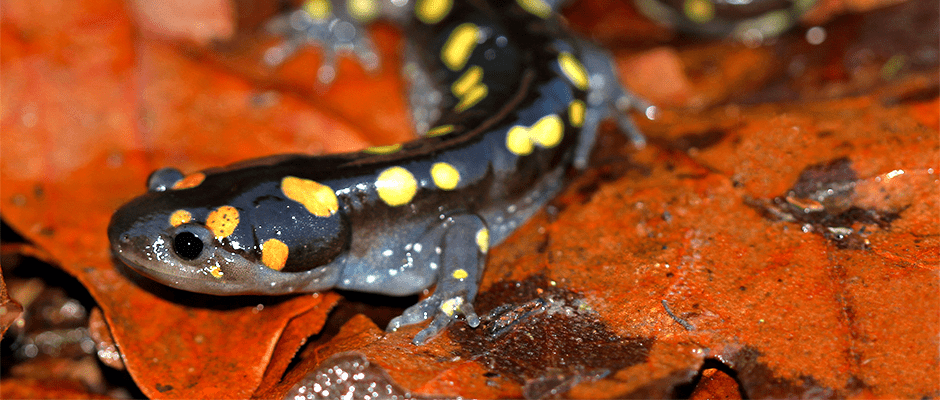Share this article
Mosquito repellent kills salamander larvae
Human use of mosquito repellents can be important to combat mosquitoes carrying deadly diseases such as Zika, chikungnya and West Nile virus. But researchers found one common mosquito repellent can be lethal to salamander larvae when it reaches ponds.
Research team members knew common mosquito repellents such as DEET and picaridin show up in waterways, and they wanted to know how spotted salamander (Ambystoma maculatum) larvae, which feed on mosquito larvae, are affected.
“Repellents are designed to be external, but people wash them off and down the drain it goes,” said Emma Rosi, a senior scientist at the Cary Institute of Ecosystem Studies. “It can come out the septic system and into ponds and streams.”
In a study published in Biology Letters, Rosi and her colleagues collected salamander larvae and mosquitoes and exposed both groups to different concentrations of insect repellents likely to be found in the environment.
“After four days, we started to see tail deformities from the picaridin-containing insect repellent,” Rosi said. “And after 25 days, we saw salamander larvae exposed to picaridin had much higher rates of mortality.” They found no effects of DEET on the salamanders.
Then, the team looked at how the repellents impacted mosquitoes. Surprisingly, researchers found they had no effect on them, even though they are effective at repelling adult mosquitoes.
Rosi’s colleagues also found that salamander larvae are top predators of mosquito larvae, meaning that if mosquito repellent harms more salamander larvae in ponds, they’ll consume less larvae, resulting in more mosquitoes. “There’s a potential negative feedback loop,” Rosi said.
It’s important to continue to research how pharmaceuticals and personal care products affect wildlife and the environment, Rosi said, especially before they are mass-produced, so the products have less of an impact on the environment.
“There are thousands of pharmaceuticals and personal care products and contaminants out there,” she said. “We don’t understand the ecological effects and mixtures of compounds. What I see is multiple stressors affecting the aquatic ecosystem. If we really want to understand how animals and nature respond to multiple stressors, we’ve got to be able to do that research.”
Header Image: Commonly used mosquito repellent with the chemical picaridin increase mortality in spotted salamanders. ©Peter Paplanus








